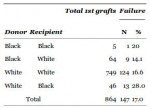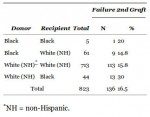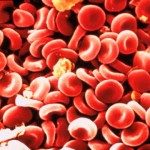
Levy Izhak Rosenbaum
This installment focuses on jewish involvement in the organ trade and trafficking.
An article first mentioned in Race and Organ Transplants – Part 2:
Citation: Sade RM. Transplantation, the Organ Gap, and Race. J So Carolina Med Assoc 1999; 95(3):112-115 (PDF):
Financial Rewards For Organ Donation
Another kind of personal benefit that could provide incentive to donate organs is financial rewards. Such payment, however, has been illegal since 1984.
The rationale behind the prohibition of financial rewards to living kidney donors is that it is morally outrageous, and therefore intolerable, to pay people for organs. Moreover, nearly all of us react to the idea of paying for organs with a feeling of repugnance. On close inspection of these issues, we will see that moral arguments against payment for organs are extremely weak, and that the real basis of prohibition is emotional.
Issues of exploitation and paternalism are also used to justify prohibition of the sale of organs. Paternalism occurs when a person is coerced for his own benefit. Exploitation occurs when a person is coerced for another’s benefit. Coercion is generally understood to occur when one person reduces the options available to another, so that the other suffers a loss from his own viewpoint. Either form of coercion may be justified or unjustified.
The effect of prohibition has been disproportionately adverse on poor minorities. Organs, both from living donors and cadavers, have great value, and financial benefit to donors disproportionately harms poor people. Prohibiting the sale of organs reduces special incentives for poor people to donate, and the disproportionate number of blacks in that group translates into reduction of availability of biologically suitable organs for blacks in particular. While prohibition of organ sales harms everyone, its disproportionate effect on blacks means that reversing it would disproportionately benefit them.
There are strong moral and ethical arguments that lead to the conclusion that absolute prohibition of the sale of organs should be rejected. By changing the focus from rationing of scarce organs to increase the numbers of organs available for transplantation, we will at least be free to discuss, as we are not now, what kind of financial rewards would work best in assuring an adequate supply of organs. Increasing the range of policy choices in this way may smooth the road toward disappearance of the organ gap.
What started with a discussion of racial disparity in organ donorship and need, and specifically under the guise of favoring blacks, was in the end clearly an argument in favor of monetization. Who would really benefit?
When investigating organ trafficking, one name keeps popping up. Nancy Scheper-Hughes, Wikipedia:
Nancy Scheper-Hughes (born 1944, New York City) is a professor of Anthropology and director of the program in Medical Anthropology at the University of California at Berkeley.
In the 2000s, Scheper-Hughes investigated an international ring of organ sellers based in New York, New Jersey and Israel. She interviewed several hundred third-world organ donors, and reported that they all felt that they had been taken advantage of, and were often left sick, unable to work, and unable to get medical care. Some of them were tricked into donating organs, and threatened at gunpoint when they tried to resist. Some transplants took place at major New York City hospitals, and Scheper-Hughes said that the hospital personnel knew illegal transplants were taking place. She informed the Federal Bureau of Investigation, which led to arrests several years later.[8][9] When the events became public, she said that much of the world’s illicit traffic in kidneys could be traced to Israel.[citation needed] In a 2008 lecture, she is reported as identifying two motivations of Israeli traffickers as “greed” and “Revenge, restitution—reparation for the Holocaust.” She is reported as describing speaking with Israeli brokers who told her “it’s kind of ‘an eye for an eye and a tooth for a tooth. We’re going to get every single kidney and liver and heart that we can. The world owes it to us.’”[10]
Rather than simply reporting the plain facts about the organ trafficking, the following article dresses it up as a human interest story, personalized with false details. As a result the jewish/Israeli nature of this trade is somewhat disguised, though it can be gleaned from close reading, especially between the lines. Kidney kin: inside the transatlantic transplant trade, by Nancy Scheper-Hughes, 1 Jan 2006:
Lucille Hubbard is a tiny woman. Lucille, not her real name, is poor, black, and dependent on Medicaid and public assistance. After leaving the West Indies for New York as a young adult, Lucille made her living caring for people in need. Before turning 25, however, she learned that she suffered from untreated hypertension and kidney disease.
Later on “Lucille” is described as “a wealthy New Yorker”.
Her health rapidly deteriorating, Lucille considered an illegal transplant abroad from a paid living kidney donor. Lucille was put in touch with an Israeli-led syndicate of organ brokers, part of a worldwide network of transplant traffickers. The brokers suggested a “transplant tour” to Turkey or Romania, but the price of the prearranged package deal to Turkey was an astronomical US$180,000, and the cheaper option of rural Transylvania was frightening. Lucille feared that she might reject a kidney from a Romanian or Turkish peasant. She needed a cheaper alternative and an organ from a person who was, she felt, biogenetically “closer” to herself, preferably a kidney from a black person. “I am not a racist,” she told me. “But I was afraid of going all that distance and facing another organ rejection.”
There is obviously no shortage of desperate individuals willing to sell a kidney, a portion of their liver, a lung, or a cornea for a pittance. While erasing one vexing scarcity, the organs trade has produced a new one–a scarcity of transplant patients of sufficient means and willingness to break, bend, or bypass laws and longstanding codes of medical ethical conduct. The organ trade depends on four populations: desperate buyers, equally desperate sellers, renegade surgeons, and well-organized organs brokers.
Alberty sought out the brokers: a retired military police captain, Ivan Bonifacio, and his sidekick, a tall, “mean-looking” guy with a thick accent named Gaddy.
To Alberty’s surprise, Gaddy was Gadalya Tauber, a retired 67-year-old Israeli Defense Force policeman. On learning that Brazilians would donate to Israeli patients, Alberty asked, “Can it work that way?” Gerson, a nephew of Captain Ivan, assured him that there would be no problem because “under the skin, all men are brothers.” Gerson offered Alberty US$10,000, airfare to South Africa, and all his expenses. He was promised excellent medical care at a luxury hospital, and he might even get to travel afterwards–just for giving away a kidney he didn’t need. Gerson told Alberty that one kidney works while the other sleeps; the surgeons would remove his sleepy kidney and leave the good one.
We see here in action the fraudulent claim discussed in the White network – Race and Fraud: The Races of Mankind – Part 4, “under the skin, all men are brothers”. It is accompanied by the fraudulent claim that donors sacrifice nothing.
Going over the records in February 2004, Captain Helberg read incredulously: “August 1, 2003. Recipient: ‘Lucille Hubbard’ (New York City), age 48. Donor: Alberty Alfonso da Silva (Recife, Brazil), age 38. Living related donor.”
“Do you think the transplant surgeons really believed that a poor Brazilian was related to a wealthy New Yorker?” he asked. “These doctors turned everyone into family members–one big, sick, unhappy family,” he said disgustedly. “I won’t rest until every last one of the surgeons, nephrologists, nurses, transplant coordinators, translators, insurance company managers, HMO administrators and their international brokers are arrested and charged with organized crime.”
In August 2005, four South African transplant surgeons and several associates were charged with “fraud, assault with intent to do grievous bodily harm, and contravening the Human Tissues Act.” Their trial takes place in early 2006.
I wonder if playing up the false family relations of the organ donor and recipient is a way to compensate for not mentioning the extended jewish relations among the surgeons, nephrologists, nurses, transplant coordinators, translators, insurance company managers, HMO administrators and their international brokers. After all, organized crime has a strong tendency to be organized around familial relations.
Here is another article about organ trafficking. Again the jewish/Israeli nature of the trade is disguised somewhat as a human interest story. The Illegal Trade in Organ Is Fueled by Desperation and Growing, SPIEGEL ONLINE, 3 August 2012:
It was 2008 when a wealthy, 74-year-old businessman from the western German state of North Rhine-Westphalia decided to ignore the law and morality in order to save his own life. The businessman’s first name is Walter
Vera Shevdko, 50, a hotel maid from Israel, was on the same flight. She had emigrated from Moscow only a few months earlier
Tall and lanky, with piercing eyes, Canadian prosecutor Jonathan Ratel came to Kosovo in 2010 to aid in the development of a constitutional system within the framework of the European Union Rule of Law (EULEX) mission. It wasn’t long before Ratel had turned his attention to the illegal activities of organ traffickers at the Medicus Clinic.
Ratel, 51, is convinced that unscrupulous transplant surgeons removed kidneys from 20 to 30 people and implanted them into wealthy patients at the partially German-owned clinic. The middleman was from Israel, the buyers of the organs were from all over the world and the surgeon, referred to in the press as “Dr. Frankenstein,” was from Turkey. The organ “donors” were from places like Istanbul and the Moldovan capital Chisinau, or they had recently immigrated to Israel. The system could only work, says Ratel, because Kosovar doctors and government officials helped cover it up.
Page 2 – Vera’s Kidney, Walter’s Money: Meeting the Traffickers:
The world of organ trafficking revolves around a simple scheme. There are importing and exporting nations. Israel, Saudi Arabia, the United States and Canada are examples of the former, while China, India, the Philippines, Egypt and Moldova are exporting nations.
No Side Effects?
The truth is that organ removal is very dangerous. The recipients return to hospitals in their native countries, where doctors don’t ask a lot of questions and provide the best possible post-surgical care, especially to avert the risk of transmission of HIV or hepatitis through the new organs. The clandestine business is, of course, not entirely without risk for the buyers, either.
The suppliers of the organs, on the other hand, often can’t expect to see a doctor at all when they return home. They face the risk of infection and postoperative hemorrhage, rising blood pressure and reopening wounds.
American anthropologists and doctors have tracked down and interviewed dozens of organ sellers. Almost all donors reported that their health declined considerably after the risky procedure.
Page 3 – Vera’s Kidney, Walter’s Money: Contempt of Humankind:
A Kidney-for-Money Deal
Hospitals in Europe and North America repeatedly see patients like Walter, who return from a trip abroad and suddenly have a new kidney. Four strange incidents involving presumed organ trafficking were brought to light in Germany in 2002. In the first case, a kidney from a young Moldovan man was transplanted into a retiree from Israel at a hospital in the eastern German city of Jena in 2001. The donor was allegedly his nephew. Every transplant of this nature is examined by a so-called living donor commission in each of the German states. Its job is to determine whether the donor is truly motivated by altruism, or whether money is changing hands.
The commission in the western city of Essen, where the two alleged relatives were to undergo the surgeries, had voiced doubts — perhaps because it was the fourth such case in which an Israeli received an organ from a young Eastern European “relative.” The surgeon wasn’t overly concerned about the Essen commission’s qualms and agreed to perform the operation in Jena instead, where the local commission consented to the procedure.
Page 4 – Vera’s Kidney, Walter’s Money: Tracking Down the Suspects:
Ratel’s investigation is much further along, but he also faces an uphill battle. It was only with difficulty that the special prosecutor managed to secure permission to interview foreign witnesses via video during the trial. One of the witnesses appearing on the courtroom monitor was Vera Shevdko, who described how she lost her kidney.
But while she was speaking, the scene in the courtroom was reminiscent of the waiting room at a train station. A defense attorney answered a call on his mobile phone and also made calls. Another attorney ranted that it would be better if Israel recognized Kosovo. The next one shouted “shalom,” while a defendant gesticulated at the judge and left the courtroom. Another defendant was sleeping with his head on the table in front of him. It was a farce, and the presiding judge had no intention of intervening.
Ratel has become increasingly doubtful over whether his investigative zeal is even wanted. He has sent mutual-assistance requests halfway around the world, but even in the best cases, he says, they are only being “poorly” fulfilled. And Moscow, he adds, didn’t react to his request at all, even though several victims, like Shevdko, are Russian-born.
The investigators have identified two men who they believed played a key role: the surgeon and the organ broker, a Turk and an Israeli. Both are at large.
A Piece of Meat
The surgeon is believed to be Yusuf Sönmez, a gaunt, bald man with a neatly trimmed beard. He is known as both Dr. Frankenstein and Dr. Vulture. He even boasts of having transplanted 2,200 kidneys. By European standards, this certainly wasn’t legal.
Vera Shevdko met Sönmez. She begins to tremble and cry when she talks about him. She says that when she saw him in Priština, he didn’t respond to any of her questions, not in Russian and not in Hebrew. He simply ignored her, as if she were a piece of meat.
According to Ratel’s investigation, Sönmez collaborated with Moshe Harel in Israel. The stocky 62-year-old has both Turkish and Israeli citizenship. According to Ratel, he was in charge of recruiting donors and managed the payments. Today, Harel lives less than 20 kilometers (9 miles) away from Shevdko, in the Israeli town of Ramla. He was arrested in Priština after the raid on the Medicus Clinic. Four weeks later, the court allowed him to travel to Turkey for a month, where he had claimed that his mother was ill. Harel never returned to Kosovo. “Of course not,” says Ratel.
A German Doctor
Interpol still lists Harel as a wanted criminal. The statements by Shevdko and other donors convinced Israeli authorities to join Ratel’s investigation. Harel was arrested and charged with human trafficking, money laundering, organ trafficking and tax evasion. The Israeli authorities released him on parole. He has not commented on the charges.
I wrote about the Bid Rig bust and the organ trafficking that it brought to light in 2009: Jewish Supremacists Bribing Politicians and Laundering Proceeds of Criminal Activity. The insular, no-snitch attitudes of jews enabled these crimes, as did the taboo, hands-off attitudes of law enforcement authorities.
Operation Bid Rig, Wikipedia:
Operation Bid Rig III
The third phase of the investigation—Operation Bid Rig III—began after an individual identified by news sources as real estate developer Solomon Dwek of Ocean Township was arrested on charges of committing $50 million in bank fraud in May 2006. Dwek, a well-known member of the Syrian Jewish community whose parents founded the Deal Yeshiva,[1] agreed to become a cooperating witness for the FBI, infiltrating a money-laundering network connecting Israel and Syrian Jewish communities in Brooklyn and Deal, New Jersey. This network has allegedly laundered tens of millions of dollars through charitable non-profit organizations controlled by rabbis in New York and New Jersey. Among the rabbis implicated are Saul J. Kassin of Congregation Shaare Zion in Brooklyn, Eliahu Ben Haim of Congregation Ohel Yaacob in Deal, and Edmond Nahum of the Deal Synagogue.[6]
According to criminal complaints, Dwek (identified as “CW” for “cooperating witness”), informed targets of the sting that he was bankrupt and trying to conceal his assets, claiming involvement in illegal businesses including the sale of counterfeit Gucci and Prada handbags, as well as insurance scams and bank frauds. The targets accepted checks made by Dwek made out to their charitable foundations and returned the money to him after deducting a fee. Much of the cash they provided him came from Israel, and some of that in turn came from a Swiss banker, prosecutors said. Prosecutors said that about $3 million had been laundered for Dwek since the beginning of the third phase of the operation in June 2007, much of the money coming from Israel.
Organ trafficking
Levy Izhak Rosenbaum of Brooklyn was alleged to have been conspiring to arrange the sale of an Israeli citizen’s kidney for $160,000.[1] According to the complaint, Rosenbaum told the cooperating witness that he had been involved in the illegal sale of kidneys for 10 years. Acting US Attorney Ralph Marra said “His business was to entice vulnerable people to give up a kidney for $10,000 which he would turn around and sell for $160,000”. Anthropologist and organ trade expert Nancy Scheper-Hughes claimed that she had informed the FBI that Rosenbaum was “a major figure” in international organ smuggling 7 years ago, and that many of Rosenbaum’s donors had come from Eastern Europe. She also heard reports that Rosenbaum held donors at gunpoint to ensure they donated their organs.[9] This is the first organ trafficking case in U.S. history. In October 2011, Rosenbaum plead guilty to three counts of organ trafficking and one count of conspiracy.[10]
Anthropologist’s ‘Dick Tracy moment’ plays role in arrest of suspected kidney trafficker, NY Daily News, 24 July 2009:
The Brooklyn man arrested Thursday for dealing in black-market kidneys was identified to the FBI seven years ago as a major figure in a global human organ ring.
Levy-Izhak Rosenbaum’s name, address and even phone number were passed to an FBI agent in a meeting at the Roosevelt Hotel in Manhattan by a prominent anthropologist who has been studying and documenting organ trafficking for more than a decade.
Nancy Scheper-Hughes of the University of California, Berkeley, was and is very clear as to Rosenbaum’s role in the ring.
“He is the main U.S. broker for an international trafficking network,” she said.
The man called Rosenbaum “a thug” who would pull out a pistol he was apparently licensed to carry and tell the sellers, “You’re here. A deal is a deal. Now, you’ll give us a kidney or you’ll never go home.’ “
She waited and waited for something to be done. The FBI may have been following the lead of the State Department, which dismissed organ trafficking as “urban legend.”
“It would be impossible to conceal a clandestine organ trafficking ring,” a 2004 State Department report stated.
Scheper-Hughes had better luck in Brazil and in South Africa, where law enforcement corroborated her findings and acted decisively.
But the ring kept operating elsewhere. Scheper-Hughes visited villages in Moldova where, “20% of the men were siphoned off to be kidney sellers in this same scheme.”
15000 kidneys trafficked each year, Organ Watch (Scheper-Hughes was a founder), 15 Feb 2008:
Vienna, Austria: Top transplant surgeons are collaborating with criminal organ trafficking networks to target the desperate, an expert said Thursday.”It involves people from the highest level of their profession,” said Nancy Scheper-Hughes, founding director of Organs Watch, an academic research project at the University of California, Berkeley.
Some surgeons are ”willing to collaborate with the lowest levels of society — with criminal networks, brokers and with kidney hunters, who are the absolutely necessary factor,” she said.
Though it goes unmentioned by the anthropologist, a tribal bond helps explain this otherwise odd willingness.
Other members of the jewish tribe are hard at work on the legislative front. Kidney Donation Scandal Sparks New Debate Over Specter’s Organ Legislation, Forward.com, 5 August 2009:
Washington — Attempts to fix the nation’s organ donation system have attracted new interest following the recent arrest of a Brooklyn rabbi accused of illegally buying kidneys from live donors and selling them at a huge profit to desperate patients awaiting transplant surgery.
While human organs trafficking of the sort allegedly conducted by Rabbi Levy Izhak Rosenbaum is widely condemned, the notion of providing compensation as an incentive for organ donors is being examined seriously in Washington.
Media reports since Rosenbaum’s arrest have highlighted in particular a proposed bill that would allow organ donors and their families to receive non-cash benefits from state or federal governments.
The proposed language cites Israel as a model of a country that has enacted a law providing benefits for organ donors. Israel’s law, passed in March 2008 to address a notoriously low rate of donation in that country, provides living organ donors with about $5,000 in compensation and increased health care and social security benefits. Studies to document the law’s impact do not yet exist.
Critics of Specter’s legislation point to the case study of Iran, which has allowed the regulated sale of organs since 1996. Studies there indicate that a majority of donors subsequently regretted selling their organs. Many suffered medical complications.
Specter’s proposal has been endorsed by the American Medical Association and by advocacy groups for kidney patients, and is seen as a lifeline for patients fighting an increasing shortage of organs for transplant. According to 2007 statistics, there are more than 100,000 individuals in America waiting for organ donations, with only 14,000 people donating organs during the year. More than 6,000 patients died in 2007 while on the transplant waiting list.
But critics view any material incentive given to organ donors as morally wrong and practically counterproductive. A paper published in June by two leading activists from the Coalition for Organ-Failure Solutions argues that while Specter’s bill does not offer cash compensation, it nonetheless entails all the risk of a commercialized organ donation system: targeting poor donors, encouraging donations from unfit donors in financial need and changing the structure of the American organ donation system “by abandoning our altruistic system and replacing it with a system based on calculated materialism.”
The issue is also vexing for a Jewish community still struggling to overcome the wide exposure of Rosenbaum’s arrest. Beyond that, there have long been complaints that Jews are underrepresented among organ donors because of Jewish religious restrictions.
But Rabbi Eddie Reichman, a leading voice in the Orthodox community on issues of bioethics, sees no problem with fully supporting Specter’s proposed legislation. Reichman, an associate professor of emergency medicine at Yeshiva University’s Albert Einstein College of Medicine, recently completed a detailed study of Jewish law’s approach to the issue. His conclusion: “From a Jewish standpoint, there is no reason not to receive compensation for organ donation.”
Connecting the dots. New Light On Organ Trafficking, The Jewish Week, 29 July 2009:
The FBI knew about a Brooklyn-based organ merchant working within the Jewish community here and in Israel as far back as 2002, but for unknown reasons, did not act against him until last week.
“I used my ethnographic skills to connect the dots,” Scheper-Hughes, who is writing a book on organ trafficking, said on WNYC radio Friday. “Eventually that brought me to Isaac Rosenbaum.”
Robby Berman, executive director of the Halachic Organ Donor Society, says 3,000 Americans and 100 Israelis die each year of kidney failure.
“Although there are two sides to the debate, there are many prominent rabbis who support giving financial incentives to encourage people to donate their kidneys,” said Berman. “Admittedly there are many social concerns, such as the exploitation of poor people. [But] it is my personal opinion that this option of legalizing payments along with government oversight and supervision should be seriously explored.”
Legalization of payments to donors, which could bring about insurance coverage, would shut down the black market, said Berman.
“The illegality of it,” he said, “fuels the exploitation.”
We can use our ethnographic skills to connect more dots than Scheper-Hughes will.
* Jews are into organ trafficking up to their eyeballs – because jews are overrepresented among doctors, because jews need more organs than they donate, and because it is profitable.
* Jews get away with it, at least to a certain extent – because “fear of the jews” and because of jewish media control.
* Jews would like to see organ trafficking legalized. They construct arguments moralizing/rationalizing it and lobby for legislative changes. They want the profits without the embarassing scandals.
The podcast will be broadcast and available for download on Tuesday at 9PM ET.
Podcast: Play in new window | Download
 Commentary on the importance and interplay of media and identity evident in the wake of the Boston bombing.
Commentary on the importance and interplay of media and identity evident in the wake of the Boston bombing.




















